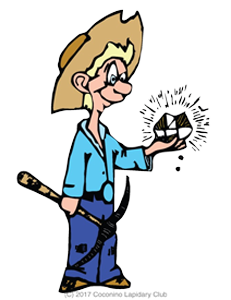This is a brief introduction to the mineral Pyrite, or when we were young, known as Fools Gold. I’m also going to tell you about one mineral species which forms kidney stones in people. Pyrite is an iron sulfide with two atoms of sulfur for every iron atom, giving it the formula FeS2. [Ref 1]. . . Read More
Minerals
Pyrite
Opals – As Gemstones & it’s Biological Role in Grasses
Today I want to talk about opal as a gemstone and it’s, not expected, biological role in grasses and algae. Opal as a Gemstone Gem-quality opals are characterized as Precious Opal, also called Fire Opals and Common Opals. Precious Opal as a gemstone is prized by collectors and can display all the colors of the. . . Read More
Glorious Garnets
In this blog, the subject is the Garnet Family and their six members, (See Figure 1), which are gemstones and mineral specimens highly prized by collectors, as well as by those that wear them, because of their colors. Their colors, as seen in Figure 1, span the rainbow, and some unexpectedly undergo a change in. . . Read More
A Feast for Your Eyes – A Gallery of Garnet Family Specimens
In the presentation of photos of specimens of various garnets the source of the photo is referenced. For more or supporting images, Google the name of the mineral and the word image to see a gallery of additional images. Almandine Garnets Specimens from the classic localities of Wrangall Island, Alaska and Tyrol, Austria as well. . . Read More
Who Is That Masked Mineral Man?
I’ve been an avid collector of mineral specimens from around the world since my experience, at the age of 13, of finding a beautiful black tourmaline crystal while on a Boy Scout hiking adventure. We were in the upper limits of the gem mining Pala District in San Diego County, California. I’m now 84 and still. . . Read More
What is the Difference Between a Rock and a Mineral?
According to the USGS website, “A mineral is a naturally occurring inorganic element or compound having an orderly internal structure and characteristic chemical composition, crystal form, and physical properties”. “A rock is an aggregate of one or more mineral, or a body of undifferentiated mineral matter”. For more information about rocks and minerals, be sure. . . Read More
On Wulfenite
Today my main topic is the mineral Wulfenite which has a strong association with Arizona. Lead mines, in which Wulfenite has been found, are numerous, with some of them offering such beautiful examples of the mineral that they have become classic localities. Among these are the Rowley Mine and the Glove Mine. More photos of. . . Read More
USE OF COLOR IN MINERAL IDENTIFICATION
In some minerals color is directly related to a metallic element, is characteristic, and can be useful in identification. As examples, azurite as shown in Figure 1A, is always blue due to the presence of copper, and rhodochrosite, shown in Figure 1B, is always pink to red due to the presence of manganese,. However minerals such as fluorite, colorless in it self, can be yellow, blue, purple, or green due to low concentrations of metal impurities.
USE OF CRYSTAL FORMS AND HABITS IN MINERAL IDENTIFICATION
The atoms within the crystal of a mineral are arranged in a regular fashion to form a lattice, and the crystal exhibits a shape with surface regularity which reflects its internal symmetry[Ref1]. The shape of a crystal is often typical of a mineral. and often typical the location where found; thus, crystal shape comprised of crystallographic forms modulated by crystal habit can be a useful tool in mineral identification.
USES OF CLEAVAGE, PARTING, AND FRACTURE IN MINERAL IDENTIFICATION
Cleavage in a mineral is the tendency for the crystal to split along definite crystallographic planes as exemplified by the rhombohedron cleaved from a calcite crystal shown in Figure 1[Ref1]. These planes of weakness are present within a regular repeating array of atoms and ions within the crystal and are always parallel to a potential face of the crystal.
